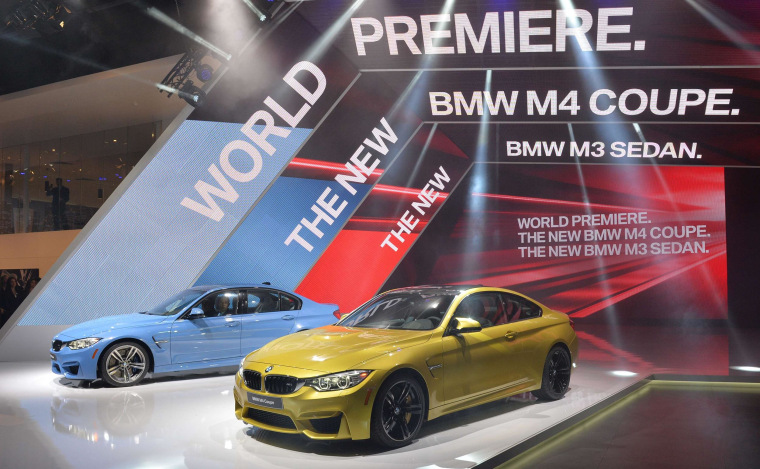The BMW M3 is an icon of the performance car market, delivering a tire-screeching 425 horsepower from its twin-turbo V-6. It’s about as far from a “green machine” as one could imagine, but that will change in a few years.
Engineers at BMW headquarters in Munich are working on the next-generation M3, and promise it will be even more powerful than the current model. But they also confide that the powertrain they’re developing is a plug-in hybrid that will make the M3 capable of driving at least 20 miles on battery power alone.
The idea of using hybrid technology for one of the world’s most popular performance cars might seem an oxymoron. But that philosophy is quickly becoming the rule, rather than the exception, in part due to ever-tougher emissions and fuel economy standards but also because industry leaders are discovering that electric propulsion can deliver tremendous power.

Tesla was one of the first automakers to show that battery power could be mean, as well as green. It’s offering a new update for its Model S, dubbed “Luuudicrous Mode” – the name lifted from the Mel Brooks movie “Spaceballs” – that can launch the battery electric sedan from 0 to 60 in just 2.8 seconds.
That’s almost enough to keep up with the McLaren flagship, the P1, boasts Tesla CEO and founder Elon Musk. The P1 and the Ferrari “ultracar,” the La Ferrari, both use hybrid drivetrains based on the Kinetic Energy Recovery System, or KERS, developed for Formula One racing.
At its heart, KERS recaptures energy lost during braking or coasting, which then can be used to power those vehicles during acceleration. Hard acceleration, it turns out.
A conventional internal combustion engine needs to build revs in order to deliver maximum power, but electric motors produce top torque – which gives you a tire-smoking burnout -- the moment they start to spin.
Consider that a happy coincidence because luxury and performance automakers were heading for trouble. It’s becoming difficult for even mainstream models to meet new environmental rules, such as the 54.5 mile per gallon Corporate Average Fuel Economy (CAFÉ) standard taking effect in 2025. Add the fact that a number of cities are considering bans on gas-powered vehicles, allowing only so-called Zero-Emission Vehicles, or ZEVs to access city centers.
Beijing, Shanghai and a number of other large Chinese cities have enacted strict registration quotas, so even the most affluent buyers often have to wait months to get a new car on the road. Those rules are waived for qualified electric vehicles.
That’s one reason most luxury makers are planning to roll out a procession of plug-in hybrids or pure battery-electric models. Mercedes, for example, has committed to launching 10 new PHEVs by 2017. Audi has a number of plug-ins coming for its own line-up. And it has confirmed it will introduce a new long-range battery-electric SUV at next month’s Frankfurt Motor Show designed to compete with the all-electric Model X that Tesla will launch this year.
Audi also is working up a pure battery-electric version of its R8 supercar that will give Tesla’s Model S a run for its money.
There’s another reason luxury makers are emphasizing battery power.
When it comes to mainstream buyers, “People want environmentally friendly cars but they don’t want to pay for them,” contends Nissan CEO Carlos Ghosn, one of the industry’s most vocal advocates of battery power. Along with lower fuel prices, the price penalty for vehicles like Nissan’s Leaf electric have resulted in falling sales this year. But the general consensus is that luxury buyers will be less reluctant to pay a premium if they can see a tangible benefit.
As Tesla has shown, many well-to-do drivers like the idea of going green. BMW is betting that even more customers will be drawn to alternative power if they can leave black tread marks on the pavement as well.
More from The Detroit Bureau
GM Taking Heat for Plan to Import Chinese-Made SUV
Audi, Aston Martin Launching Battery SUVs to Target Tesla Model X